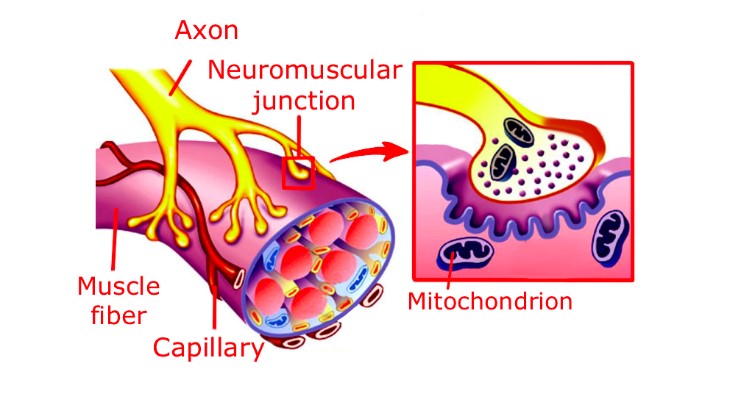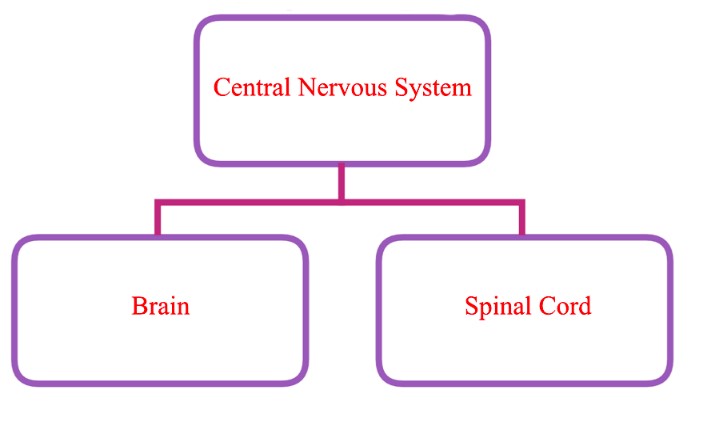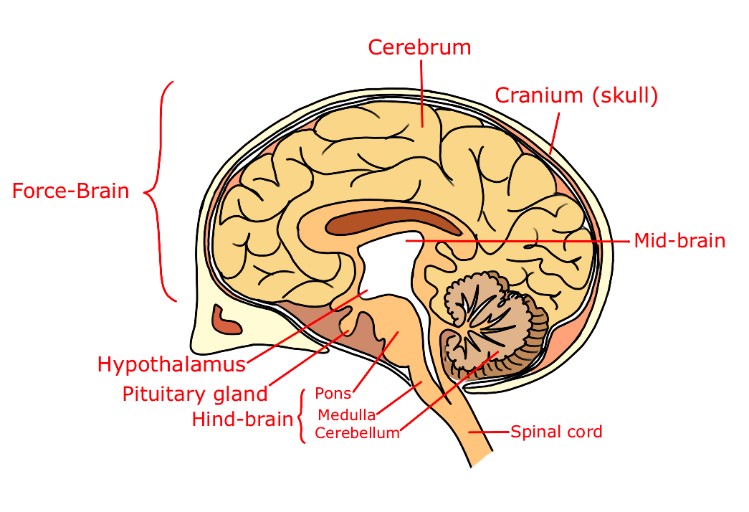Control and Coordination in Human Being: Introduction
Specialised tissues in multicellular organisms provide control and coordination tasks. Nervous and muscular structures in animals give this control and coordination.
Nervous Tissue
- It consists of an organised network of neurons
- It is spread throughout the body and can communicate with every part of the body through electrical impulses
- Specialised tips of some nerve cells detect all the information from the environment
- These receptors are usually located in our sense organs like the ear, the nose, the tongue
- Gustatory receptors detect taste
- Olfactory receptors detect the smell

Reflex Actions
- These are sudden actions in response to something in the environment
- A connection, called a reflex arc, is formed in the spinal cord when nerves from all over the body meet in a bundle in the spinal cord
- The reflex arc speeds up the process of detecting the signal and responding to it quickly by an output action, although the input information also goes to the brain
- Reflex arcs are very effective for quick responses even though complex neuron networks exist
- The central coordinating centre of the body is the brain, which also constitutes the Central Nervous System
Central Nervous System
- It can communicate with all parts of the body and can process any or all information it receives
- It communicates with other parts of the body with the help of the peripheral nervous system consisting of cranial nerves arising from the brain and spinal nerves arising from the spinal cord

Brain
It’s housed in a fluid-filled balloon that absorbs even more shock. It is divided into three major sections or regions:

Forebrain
- It is the brain’s main thinking area, with sections that receive sensory impulses from a variety of receptors
- Separate areas of the forebrain are specialised for sight, smell, feel, hearing, and so on
Midbrain and the Hindbrain
- They control another set of muscle movements (many of these involuntary actions) over which there is no thinking control
- The medulla is the rear brain in charge of all involuntary activities, such as blood salivation, salivation, vomiting, and salivation
- The cerebellum, which is located in the back of the brain, is in charge of precision in voluntary activities and regulating body posture and balance
Muscle Tissue
While the nervous tissue conveys decisions to muscles for action, the Muscle tissue performs the required action or movement.
Movement in Animals
The concept of movement at the cellular level is that muscle cells will move by changing their shape to shorten.
- In response to electrical nerve signals, specific proteins in muscle cells allow them to change their shape and form within the cell
- When the nerve impulse reaches the muscles, unique proteins built in the muscles allow the muscle cells to shrink
Movement in Plants
Plants show two different types of activities:
- Immediate response to a stimulus:
- Plants like touch-me-not use electrical-chemical means to convey the information when touched
- Plant cells alter form as the amount of water in them changes, causing them to swell or shrink
- They respond to stimuli slowly by growing in a direction and appearing as moving
- Dependent on growth:
- Environmental factors such as light and gravity cause plant components to develop in different directions This shift might be either toward or away from the stimuli
- Plants exhibit tropism in response to a variety of stimuli
- For example, a plant’s roots typically grow downwards, whereas its shoots usually grow upwards and away from the ground
- Geotropism refers to the upward and downward growth of shoots and roots in response to the pull of gravity or the ground
- Chemotropism: It is the response of plant parts towards some chemicals
Electrical Impulses
Electrical Impulses are a medium of transmission of information to ensure fast responses to stimuli.
Its Limitations:
- Electrical Impulses do not reach every cell in the body
- They are only connected to the nervous tissue
- Electrical impulses cannot be created and transmitted indefinitely by cells
Because of these limitations, most multicellular organisms use another means of communication between cells, namely, chemical communication.
Conclusion
Thus, we can say that in multicellular organisms the coordination tasks are performed by specialised tissues which are known as nervous tissues. Nervous tissues consist of an organised network of neurons which are spread throughout the body and can communicate with every part of the body through electrical impulses. But there are certain actions also, which are used for sudden responses- reflex actions. The control centre of our body is the brain which also constitutes the central nervous system. The central nervous system can communicate with all parts of the body and can process any information it receives for the brain is divided into forebrain, midbrain and hindbrain.
 Profile
Profile Settings
Settings Refer your friends
Refer your friends Sign out
Sign out













